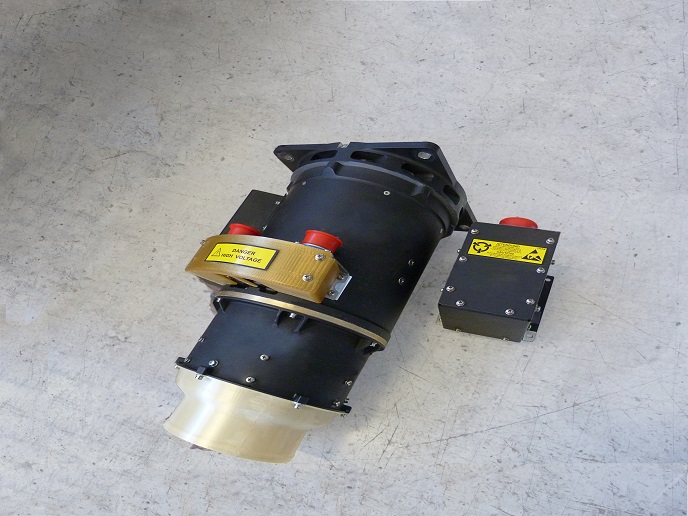High-voltage breakthrough could spur the development of high-speed, lightweight helicopters
Compound helicopters, featuring a combination of a traditional main rotor and innovative lateral ones, are very likely to cement the future of rotorcraft design. The latest incarnation of such a rotorcraft configuration is the Racer high-speed demonstrator, which can deliver increased efficiencies and higher speeds (exceeding 400 km/h), compared to traditional rotorcraft. Developed as part of the Clean Sky 2 programme, the Racer’s compound architecture builds upon the success of the earlier X3 design, incorporating two pusher lateral propellers mounted on the tips of V-shaped box wings, while retaining the vertical take-off and landing capability of traditional helicopters.
Thinking outside the box
The EU-funded 9eGEN project was set up in response to Airbus Helicopters requirements for a high-performance and reliable power generator that could move the Racer in the ‘Clean Sky’ direction. “The stringent criteria set helped us transform our understanding of a high-performance generator and start working on alternative solutions. Resting on three key pillars – high density, reliability and low weight – we designed a very small generator that spins fast to increase power density. Our high-voltage unit [270 VDC] should supply a great amount of electric power in the helicopter,” notes Giulia Pigozzi, business development and marketing specialist at ASE S.p.A., the Italy-based company coordinating the project. High voltages, meaning 270 VDC and high-power densities of generators offer several advantages: they help reduce the electrical current density in the cables and minimise voltage drops, thereby enabling the use of lower-diameter wires. “Compact wiring contributes to a large extent to the overall weight reduction of the helicopter. You can never imagine how this often deemed ‘pointless’ weight affects fuel consumption,” stresses Pigozzi. Leveraging its consolidated know-how on traditional electric machines, ASE introduced certain elements that added to the innovative generator design. “For example, the use of optimised mechanical parts and new magnetic structure topologies were crucial factors in reaching our targets. We even exceeded expectations, crafting lower-weight generator units than those described in the initial weight estimation analysis. This weight reduction process was the most challenging part of the entire project,” explains Valerio Canegrati, electrical engineer at ASE.
High market potential
The 9eGEN project spurred ASE to re-examine established manufacturing concepts, evolving their mindset about power generation in the aerospace sector. The company assessed the design of every single component and improved processes and procedures based on the engineering drawing. Most key elements were successfully validated through laboratory testing. The company is currently reshaping the internal processes to implement these innovations in its current product portfolio, too. The technical features that characterise the high-voltage system are expected to generate an important impact on the future demand for similar systems. The high-voltage system has already captured the interest of most relevant players in the aeronautics sector from around the world. “The future of aviation is shifting to the 270 VDC standard, and we are willing to be pioneers in this technology, becoming a globally recognised point of reference,” notes Salvatore Spina, sales and programme director at ASE. “This project offered us a new way to consider power generation in the aerospace market. Imagine a company like ASE, a typical SME-sized company, amongst the most important and well-known ones for its technological capabilities, which is a point of big pride,” says Fausto Cosentino, general manager of ASE. “The project will open new doors and we are beginning to see the first feedbacks from the market.”
Keywords
9eGEN, ASE, 270 VDC, high-voltage system, Racer, power density, brushless generator, compound helicopters, aeronautics, rotorcraft



